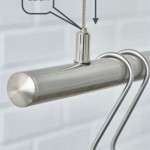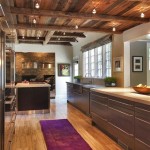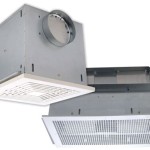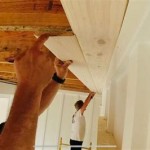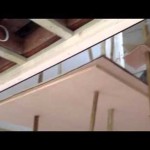What Is a False Ceiling?
A false ceiling, also known as a drop ceiling or suspended ceiling, is a secondary ceiling that is installed beneath the main structural ceiling of a building. It is a popular choice for both residential and commercial spaces, offering a range of benefits such as improved aesthetics, enhanced acoustics, and efficient management of electrical and plumbing lines.
Benefits of False Ceilings:
False ceilings provide numerous advantages, making them a preferred choice for diverse applications. Some key benefits include:
1. Improved Aesthetics:
False ceilings offer an excellent opportunity to enhance the visual appeal of a space. By creating a smooth and uniform surface, they mask any imperfections in the original ceiling, such as unevenness or exposed beams. Moreover, they provide a blank canvas for creative designs and finishes. Different materials, colors, and patterns can be incorporated to achieve desired aesthetics, from modern minimalism to traditional elegance.
2. Enhanced Acoustics:
False ceilings play a crucial role in noise control and sound absorption. The space between the false ceiling and the structural ceiling can be filled with acoustic insulation materials, effectively reducing noise levels and creating a quieter environment. This is particularly beneficial in spaces where noise reduction is essential, such as offices, classrooms, and home theaters.
3. Efficient Management of Utilities:
False ceilings provide a convenient and accessible space to conceal and manage essential utilities, such as electrical wiring, plumbing pipes, and ventilation ducts. This ensures a clean and organized appearance, while also facilitating easy access for maintenance and repairs.
4. Energy Efficiency:
False ceilings can contribute to energy efficiency by creating an air barrier, preventing heat loss during the winter and heat gain during the summer. This can result in significant savings on energy bills, especially in climate-controlled environments. They can also be used in conjunction with energy-efficient lighting systems for further savings.
Types of False Ceilings:
False ceilings are available in various types, each suitable for different applications and preferences. Some common types include:
1. Gypsum Board Ceilings:
Gypsum board ceilings are a popular choice due to their versatility and affordability. They are made from gypsum plasterboard, which is lightweight, fire-resistant, and easy to work with. These ceilings can be painted, textured, or covered with wallpaper to achieve different aesthetics.
2. Mineral Fiber Tile Ceilings:
Mineral fiber tiles are commonly found in commercial spaces, such as offices and schools. These tiles are made from mineral fibers, such as fiberglass or mineral wool, and are known for their excellent acoustic properties and fire resistance. They come in various sizes and designs, offering flexibility in customization.
3. Metal Ceilings:
Metal ceilings are durable, moisture-resistant, and easy to maintain. They are typically made from aluminum or steel and are available in various finishes, such as painted, anodized, or powder-coated. Metal ceilings are often used in high-traffic areas, such as shopping malls and airports, due to their durability and low maintenance requirements.
4. Wooden Ceilings:
Wooden ceilings offer a warm and natural aesthetic. They are available in various wood species, finishes, and patterns, allowing for customization to match any design scheme. Wooden ceilings are often used in residential spaces, creating a cozy and inviting atmosphere.
Installation Process of a False Ceiling:
Installing a false ceiling involves several steps, including:
1. Preparation:
The initial step involves preparing the existing ceiling by cleaning it thoroughly and ensuring that any imperfections are addressed. This may involve patching cracks or leveling uneven surfaces.
2. Framing:
A lightweight metal or wooden framework, known as a grid system, is suspended from the existing ceiling using hangers. The grid system provides support for the ceiling panels.
3. Installing the Panels:
Ceiling panels are then installed in the grid system, typically by snapping them into place. The panels can be made from various materials, depending on the type of false ceiling chosen.
4. Finishing Touches:
Once the panels are installed, any necessary finishing touches are applied, such as painting, texturing, or installing lighting fixtures.
The installation process may vary depending on the type of false ceiling chosen and the complexity of the design. It is recommended to consult with a qualified contractor to ensure proper installation and avoid any potential problems.

फ ल स ग क गत और भ Civillane

फ ल स ग क ब र म Contractorbhai

फ ल स ग क तन तर ज त ह Diffe Types Of False Ceiling

False Ceiling क य ह करत All About Series

फ ल स ग ड ज इन क प रक र Types Of False Ceiling Design

फ ल स ग क ए व भ न मग र य मत यद और कस

False Ceiling Meaning In Hindi Ka Matlab Kya Hota Hai Word

False Ceiling Part 1 In Hindi

फ ल स ग क ए व भ न मग र य मत यद और कस

Types Of False Ceiling Hindi फ ल स ग क प रक र
Related Posts

